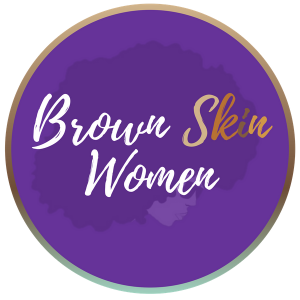You’ve probably looked at the famous chart that depicts different curls and assigns them a number. This chart has been used to incorrectly identify hair for decades. You may be wondering, what is the real difference between hair types?
In a physical sense, yes, everyone’s hair is different. You may have a looser curl pattern with medium dense, highly porous hair. In comparison, I have a tight curl pattern with high density and medium porosity. But scientifically, there is no difference between taking care of our hair and what it needs. When it comes to cleansing, hydrating, & moisturizing, all tightly textured hair needs the same things—cleansing and hydrating with shampoo and conditioner.
The Real Difference
Now, what makes everyone’s hair different is their style goal. You may have or want to loc your hair; someone else may prefer straight hair and will therefore get a relaxer or silk press to straighten. I like to wear my hair in its loose natural state with wash n go and occasional twist-outs while another person may prefer wigs or other extension protective styles. The way hair is styled and treated is the real difference. Regardless of your preference, your hair still needs hydration from water, cleansing with shampoo, conditioning, detangling, and routine trims.
The statement, “Everyone’s hair is different.” Becomes, “The real difference is that everyone has their specific desires and preferences for their hair.”
It should be noted: Depending on where you get your hair care information, what you’re instructed to do may differ from my Clean and Simple approach to hair care. My suggestion in this instance is that you do your due diligence when choosing a partner for hair care and styling that aligns with the science of hair and scalp care.
A Real Life Example
Let’s take one of my clients, Shar. She came to me after searching for a natural hair salon that cares for and styles textured hair in its natural state without altering it. Shar had been overwhelmed with her hair and preferred to keep it in a protective style, like many of my clients and students.
Here’s what we did after her first consultation: we removed the raw oils she had been applying to her scalp and hair, started cleansing weekly, put her on an every six-week trim repair plan, and removed extension “protective styles” from her regimen. Her hair and scalp have made a complete transition within three months. All of the issues she had with her itchy scalp, crunchy hair (as she called it), and hours-long wash day are now a thing of the past. Her goal now is to maintain her clean, simple, healthy, and thriving hair.
So Here’s the Deal
Dry hair? Hydrate and moisturize weekly during the cleanse process with quality shampoo and conditioner.
Itchy scalp? Cleanse with quality shampoo consistently. If the issue persists, you’ll want to see a Dermatologist. My favorite resource is BlackDermDirectory.com, where you can locate a culturally aware Dermatologist near you.
The best-case scenario is to avoid ANY style or technique that requires harming the hair or scalp.
Now, if you prefer to wear wigs, weaves, or other styles with extensions, my Protective Style 101 lesson inside of the Home Hair Academy debunks all the myths and teaches proper prep, maintenance, and takedown of “protective” styling.
Has Your Opinion Changed?
If you still feel everyone’s hair is different, I challenge you to question your mindset. Are you considering the science of hair? Do you see the connection between hair preferences and our previous perceptions? Have you questioned why the appearance of a curl should affect how often you should cleanse and hydrate it? If not, consider doing research of your own.
I am a tight-curl specialist. I advocate, teach, and service hair based on the integrity of the hair and scalp. That means I advise against going longer than a week to cleanse, avoiding quarterly trims, and consistent protective styles. If you disagree, the issue tends to be a matter of not wanting to wear your hair out for personal reasons or being unable to due to circumstances that may be beyond your control.
Brown Skin Women’s goal is to help you shift your mindset and understand that clean, simple hair and scalp care should be science-based. Once adopted and adapted, the misinformed narratives floating around the internet will stop misguiding our hair community.
If you’d like help with getting started, check out episode 23 of this Clean & Simple with Carmen Podcast and Show.

